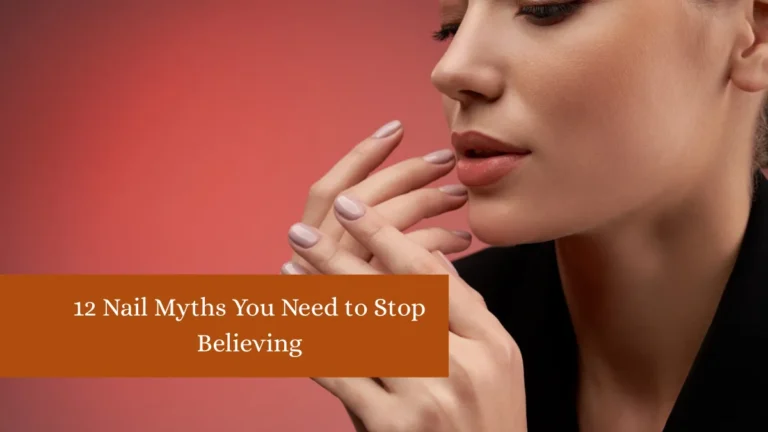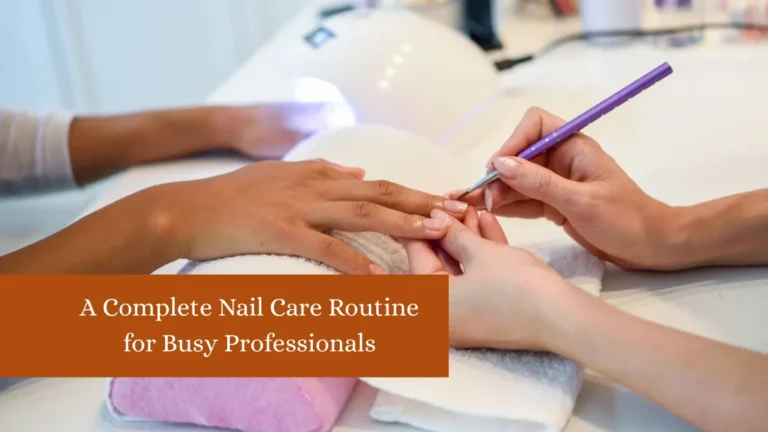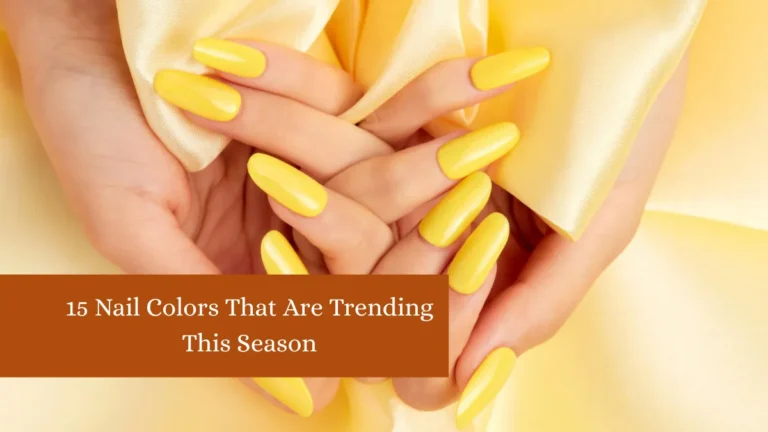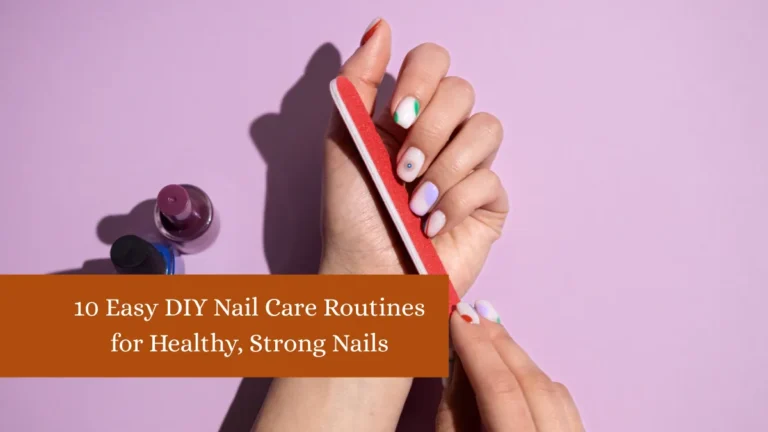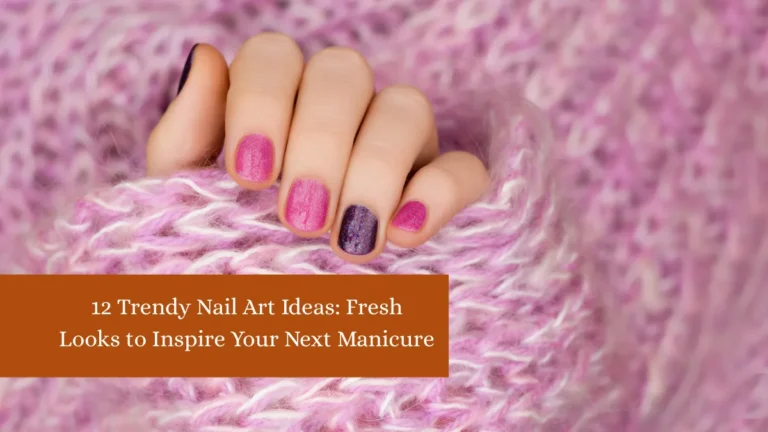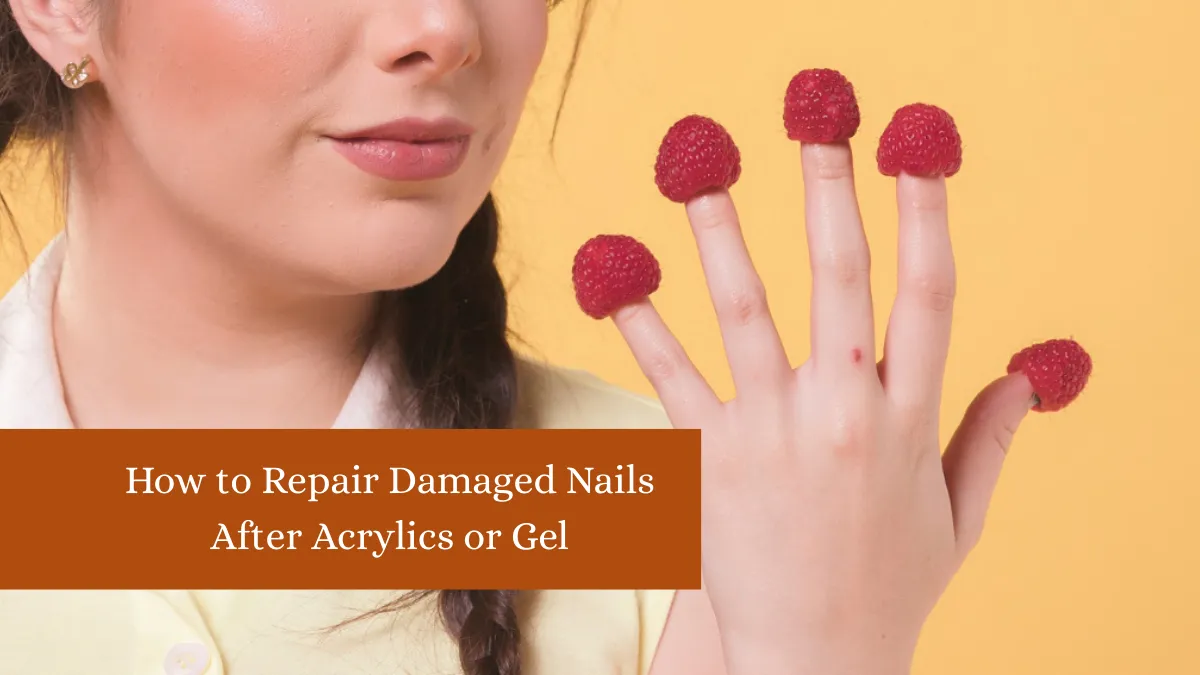Acrylic and gel manicures can give you stunning, long-lasting nails, but if they’re applied or removed improperly—or worn for extended periods without breaks—they can leave your natural nails thin, brittle, and prone to peeling. Damage often happens when acrylics or gels are forcibly removed instead of being soaked off properly, or when the nail plate is excessively filed during prep.
While the damage can be discouraging, it’s not permanent; nails naturally grow out and can regain strength with the right care. The key is understanding that repair isn’t instantaneous—it requires a combination of gentle handling, targeted hydration, nutrition, and patience. In this guide, we’ll walk through effective steps to repair your nails after acrylics or gel.
From stopping bad habits like picking at peeling layers to incorporating nail-strengthening products and protective measures, you’ll learn exactly how to restore health and beauty to your nails without causing further harm.
1. Stop All Harsh Nail Treatments Immediately
The first and most important step in repairing damaged nails is to give them a complete break from acrylics, gels, or any other enhancements. Continued application of artificial nails prevents your natural nails from recovering and often makes damage worse. Even though it might be tempting to cover up thin or peeling nails with another manicure, this only masks the problem. Instead, keep your nails bare and focus on restorative care.
Avoid nail polish removers with acetone for now, as they can further dehydrate brittle nails. Also, refrain from buffing or filing aggressively, which can thin the nail plate even more. If you must shape your nails, use a gentle glass file and work in one direction to prevent splitting. This recovery period allows your nails to grow without additional stress, giving new, healthier keratin layers a chance to replace the damaged portions. Think of it as a “nail rehab” phase—necessary and non-negotiable.
2. Moisturize Daily with Nail and Cuticle Oils
One of the biggest issues after acrylic or gel removal is dryness—not just in the nail plate, but also in the cuticles and surrounding skin. Acetone and filing strip away natural oils, leaving nails prone to peeling and breaking. To counter this, apply a high-quality cuticle oil at least twice a day, focusing on massaging it into the base of the nail where growth begins.
Oils containing jojoba, vitamin E, almond, or avocado penetrate deeply to restore flexibility and prevent cracking. Follow up with a thick hand cream to lock in moisture. This not only keeps the nails hydrated but also nourishes the cuticle area, which plays a crucial role in nail health. Consistent moisturizing is one of the most effective ways to help nails recover, as hydrated nails are far less likely to split or flake. Treat this step like brushing your teeth—non-negotiable and daily.
3. Trim and File Nails Short During Recovery
While it might be tempting to keep your nails long for aesthetic reasons, damaged nails are weaker and more prone to bending or snapping. Trimming them short during the healing process reduces the risk of painful breaks and allows the healthy new growth from the nail matrix to take over more quickly. Use a gentle glass or crystal file to shape the edges without causing microtears.
Avoid metal files or rough emery boards, which can further damage fragile nails. Keeping them short also makes it easier to maintain hydration and reduces the temptation to pick at peeling layers. Think of this as a “fresh start” for your nails—the shorter length not only looks neat but also allows you to monitor progress as healthy nail cells replace the damaged ones. Patience is essential; the average nail takes three to six months to fully grow out.
4. Use a Nail Strengthener Wisely
Nail strengtheners can be helpful, but they must be used correctly. Look for formulas free from harsh chemicals like formaldehyde, which can make nails overly rigid and prone to breakage. Instead, choose strengthening treatments enriched with proteins, calcium, and keratin. Apply them as directed—usually every other day—while giving your nails time to absorb the product fully. Overusing strengtheners or layering them too thickly can backfire, creating stiffness that leads to cracks.
For best results, combine strengthener use with consistent moisturizing, as nails need flexibility as much as strength. This balanced approach helps reinforce the nail plate without compromising its natural resilience. Think of strengtheners as a supportive tool, not a miracle cure—they work best when paired with good habits and a nutrient-rich diet.
5. Focus on a Nail-Healthy Diet
Repairing damaged nails isn’t just about external care—what you eat has a direct impact on nail health. Nails are made primarily of keratin, a protein, so a diet rich in high-quality proteins like eggs, fish, lean meats, and legumes is essential. Biotin, found in foods like almonds, sweet potatoes, and spinach, has been shown to improve nail thickness and reduce brittleness. Omega-3 fatty acids from salmon, walnuts, or flaxseeds help maintain flexibility and hydration.
Don’t forget hydration—drinking enough water keeps nails from becoming dry and brittle. Vitamins A, C, and E also play a role in maintaining strong nails by supporting collagen production and cell repair. If your diet is lacking, a daily multivitamin or specific nail supplement may be beneficial, but it’s always best to get nutrients from whole foods whenever possible. A healthy body grows healthy nails from the inside out.
6. Protect Nails from Further Damage
During recovery, your nails will be more vulnerable to damage from everyday activities. Wear gloves when doing household chores like washing dishes or using cleaning products, as harsh chemicals and prolonged water exposure can weaken nails further. Avoid using your nails as tools to open cans, peel stickers, or scratch surfaces—these habits can cause painful splits.
Even typing on a keyboard or using your phone can put stress on weakened nails if they’re too long. If you work in an environment where your nails are exposed to constant moisture or mechanical stress, consider using a nail-friendly barrier cream. Protecting nails during this phase is as important as the restorative steps, as every break or tear sets back your progress. Prevention is far easier than repairing fresh damage.
7. Consider Professional Treatments for Severe Damage
If your nails are severely damaged—splitting deep into the nail bed, peeling in layers, or showing signs of infection—it’s worth seeking professional help. Dermatologists or specialized nail technicians can recommend targeted treatments like keratin wraps, IBX repair systems, or medical-grade nail strengthening serums. In some cases, fungal infections can develop after acrylic or gel use, especially if the seal between the nail and enhancement was broken.
A professional can identify and treat these issues before they worsen. They can also help with proper shaping and gentle care that encourages healthy growth. While home remedies are effective for mild to moderate damage, professional treatments can speed up recovery for severe cases and ensure you’re not dealing with underlying conditions that require medical attention.
Bottom Line
Repairing damaged nails after acrylics or gels is entirely possible with the right approach. Prioritize hydration, nutrition, gentle handling, and protection to help nails grow back stronger and healthier. Patience is key—true repair happens as the damaged nail grows out and is replaced by healthy keratin. Avoid quick fixes that may cause more harm, and remember that prevention—through proper application, removal, and breaks between enhancements—is the best way to avoid damage in the first place.
FAQs
1. How long does it take nails to recover after acrylics or gels?
Usually 3–6 months, depending on the severity of damage.
2. Can nail strengtheners really help?
Yes, if used correctly and combined with moisturizing.
3. Should I cut my nails short during recovery?
Yes, short nails are less prone to breakage while healing.
4. Is it okay to polish my nails during repair?
It’s better to avoid polish initially to let nails recover.
5. Do I need supplements for nail repair?
Only if your diet lacks key nutrients like protein and biotin.
✨ You May Also Like ✨
